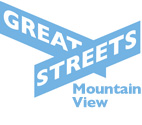by jarkatmu | Dec 11, 2012 | California Street, City Council
On November 20, Mountain View City Council held a study session on traffic safety, and Mayor Kasperzak and councilmembers Ronit Bryant and Laura Macias spoke strongly in support of taking action in the form of road design changes to improve safety and make it easier and safer to get around when walking or biking. The study session was held in response to the recent rash of collisions between cars and students walking and biking to local schools, the April case of reckless driving that killed William Ware as he waited for a bus, and growing public awareness that the status quo is negatively impacting the quality of life in the city.
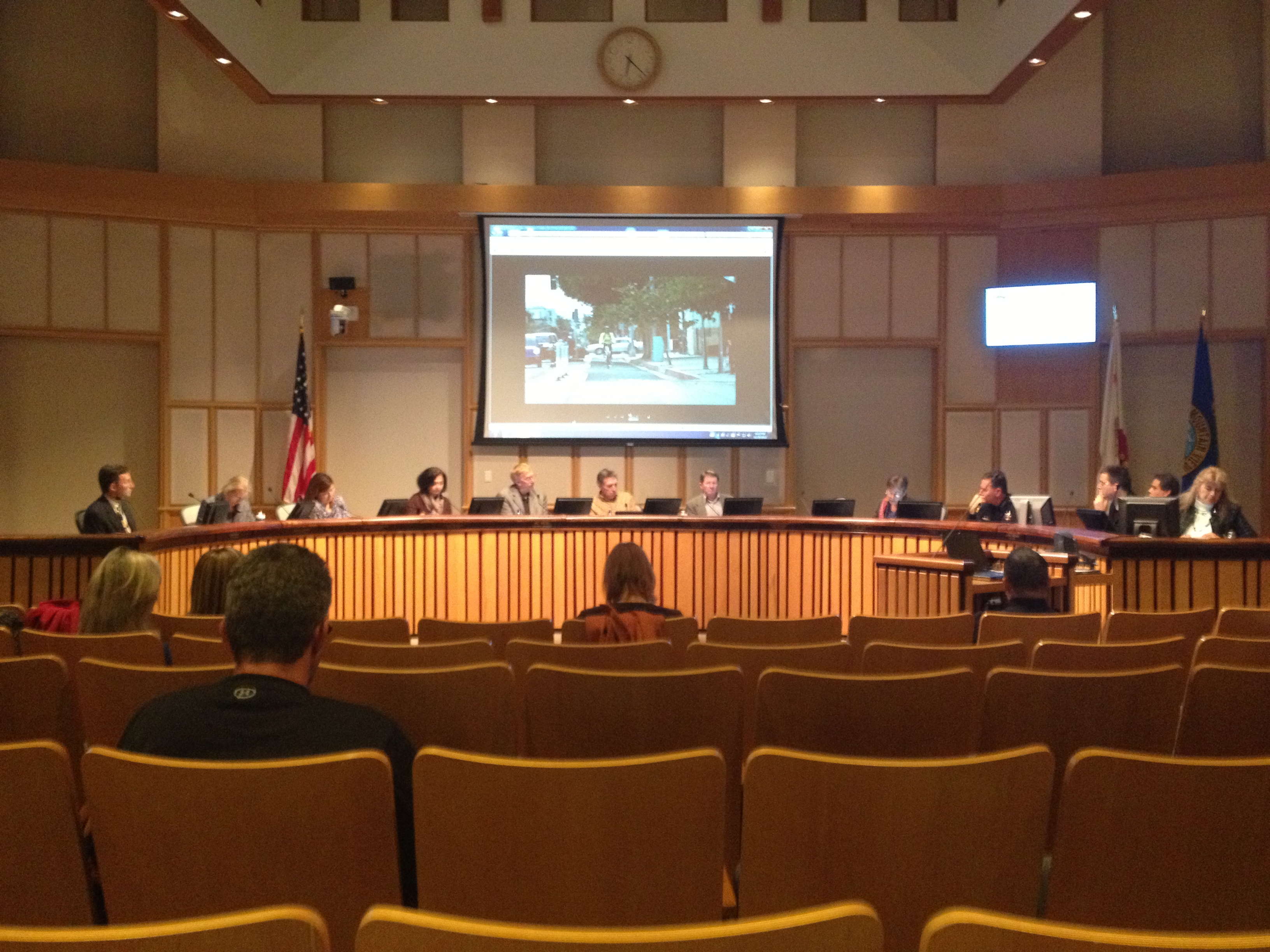
Councilmember Laura Macias briefs the council on safe bicycle street design at the November 20 study session.
City Staff and the Police Department gave a presentation outlining the the student education, enforcement, and data collection efforts that are currently ongoing. Public Works Director Michael Fuller discussed some of the solutions that they are working on including tree trimming, lighting, and potential speed limit reduction, particularly around schools.
In the short-term, ticketing, student education, and tree trimming are strong steps forward for safer and more livable streets, but in the long term, road design changes are necessary. Reducing speed limits on roads like California Street may have some impact on behavior, but as Traffic Officer Lopez from the MVPD commented at a The Shoreline West Association of Neighbors traffic safety meeting: “Once we’re gone, people speed up again.”
The reason people speed once the police leave is because the design of the road sends information to drivers. The ability to see far down the road, wide lanes, and broad corners all contribute to a perception that speeding is normal and accepted. California Street is a prime example of this condition. The long blocks, wide lanes, and rounded corners allow drivers to comfortably maintain high speeds despite traumatizing the people on foot and bike who use the street.
But isn’t speed okay? Speed can have its place on freeways and expressways, where the sole pupose of the road is to move cars quickly. However, on neighborhood streets there are numerous residents living in close proximity to the road and many bicyclists and pedestrians. Reducing speed is not only critical to creating a more livable environment, but should there be a collision between a driver and a pedestrian or bicyclist, small differences in speed are often the difference between life and death. According to numerous sources, 85% of pedestrians die when hit by a car travelling at 40MPH, 40% die at 30MPH, and 10% die at 20mph. The posted speed limit of most large streets in Mountain View is 35, and we know drivers often go faster. Recognizing the reality of our major streets, councilmember Ronit Bryant declared: “If it feels comfortable to be driving 40mph on our major streets, something needs to change.”

Relationship between speed and pedestrian fatalities.
Moving forward, Councilmember Laura Macias called for continued action at the city’s Transportation and Bicycle and Pedestrian Advisory Committee and Mayor Mike Kasperzak stated “I would like to see Mountain View out in front on these issues.” City Council will have an opportunity in January or February of 2013 to confirm their support of safer, more livable streets when they make recommendations for the Capital Improvement Project list. The California Street road diet and streetscape improvement project proposed by Great Streets Rengstorff Park could be added to this list, but your support of this and smilar projects are needed to make truly great streets. Once we have more information on key opportunities for public input, we hope you will join us in writing letters and attending meetings in support of better road design.
by wendeeswonderings | Nov 18, 2012 | California Street, Escuela Avenue
Elana Pacheco spotted PG&E connecting electricity to the new streetlight!
The Streetlight at California & Escuela now has power to it. The lanes need to be restriped and the old streetlight removed to complete this process. Sayed Fahkry, Senior Traffic Engineer, City of Mountain View, has said that he expects this to be completed within a week.
We look forward to posting pictures of the new streetlight when it is working.
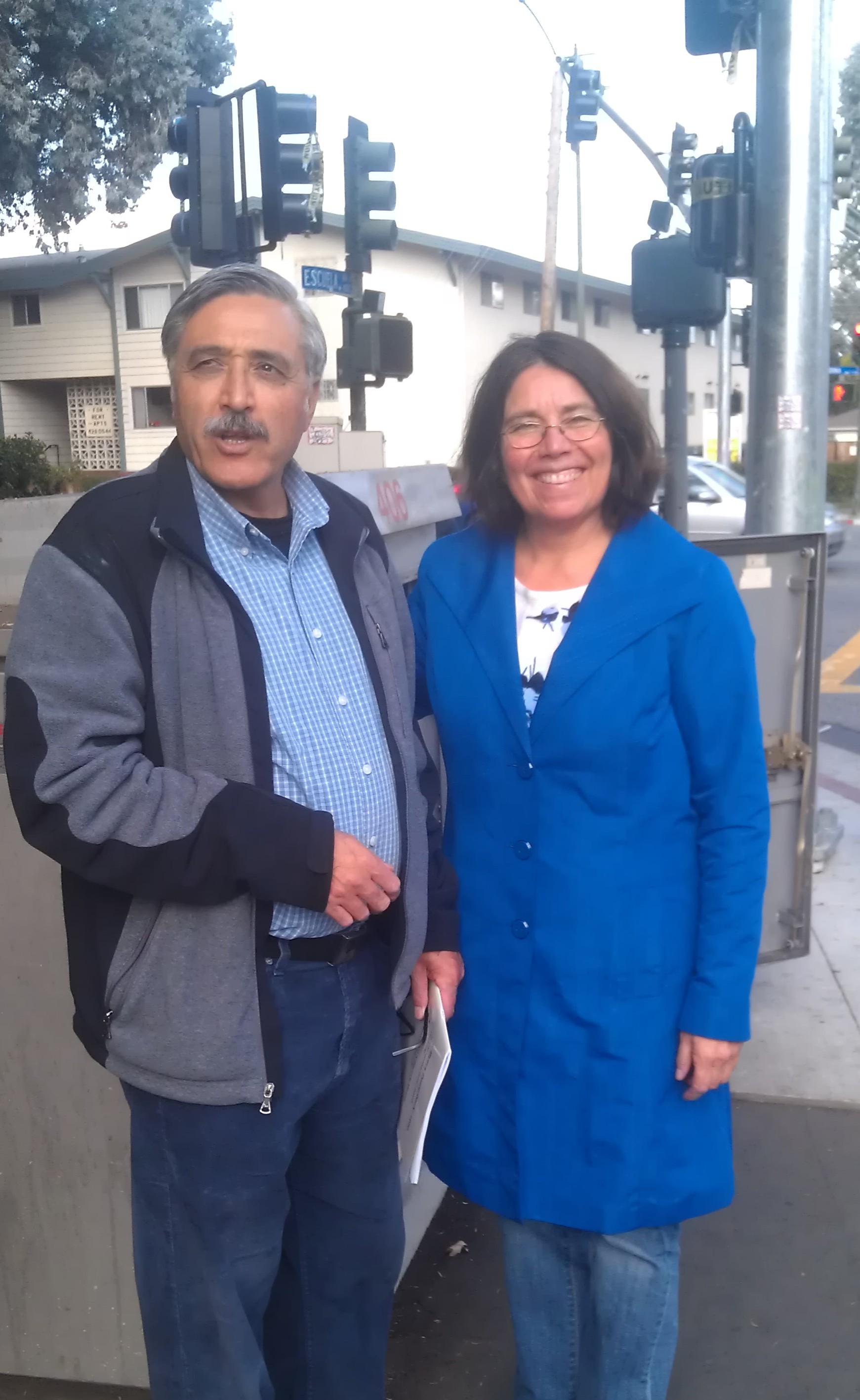
Elana Pacheco and Sayed Fakhry in front of the electrical box for the new Streetlight.
by wendeeswonderings | Oct 17, 2012 | California Street, Escuela Avenue, Uncategorized
Dear Neighbors and Friends,
Please join us for an update for on Great Streets Rengstorff Park!
Friday, November 2nd
7:00 – 9:00pm
Rengstorff Community Center
201 Rengstorff Avenue
Mountain View, CA 94040
We were invited to attend the recent
Shoreline West Association of Neighbors (SWAN) community meeting where city staff and MVPD discussed the recent deaths on California Avenue and what they are doing to improve the safety of Mountain View streets.
GSRP will be discussing how you think we should improve the safety, access, and livability of Rengstorff Park area streets.
With the information we previously gathered and information from city staff we will be focusing our conversation on California Street and Escuela Avenue. If your interest is not on these specific streets, we hope that you will join us to learn more about the network of streets in this area as we hope to move forward improving the safety of this area, one street at a time.
Some highlights of our progress:
- We launched a website based on the information that we gathered from our first meeting.
- We have met twice with city staff and have new information on what we can do next to make the Rengstorff Great Streets Neighborhood streets safer.
- Lots of media attention! At last count five articles and three editorials in MV Voice.
A light dinner will be provided, a $5 donation is requested.
Please help us to involve more neighbors and friends by inviting anyone you think has any interest in safer streets for everyone in Mountain View.
RSVP preferred (so we know how much food to provide), but not mandatory. Please send an email to greatstreetsrp@gmail.com to RSVP.
We are very excited about the progress we have made and look forward to hearing your thoughts about next steps for this project!
Warmly,
Wendee and Jarrett
by wendeeswonderings | Sep 28, 2012 | California Street, Castro School, Escuela Avenue
Great Streets Rengstorff Park had a meeting with Mountain View city staff recently. Among other things, we asked when the new traffic signals on California & Escuela will be functional.
The lastest update from the City of Mountain View Public Works Department Dickson Tam –
The signal project has been on hold due to delays with PG&E’s new electrical service for the new signal system. Currently, PG&E crews are scheduled for tomorrow, 11/14, to provide the new service. The signal contractor can then complete some striping modifications at the intersection and turn on the new signal system shortly after that.
Great Streets wants to thank the city council and staff of Mountain View for their work to improve the safety of the Rengstorff Park Area.
This is a good first step to make this area safer, but more comprehensive solutions are still needed to further improve safety and accessibility. For additional information on GSRP suggestions to make both these streets safer please see GSRP California and Shoreline Road Diet and Escuela Avenue Bike Lanes.
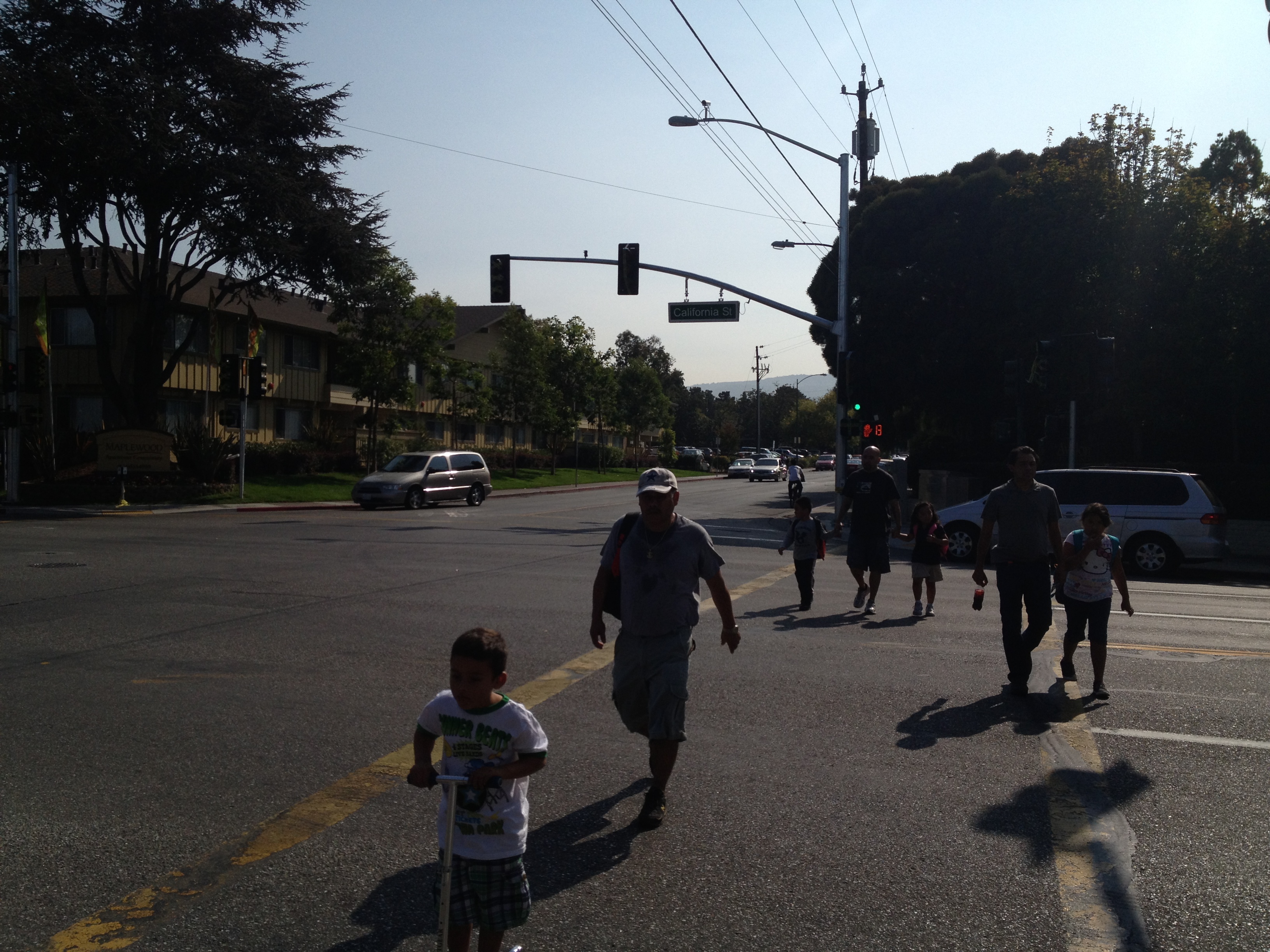
Pedestrians crossing California Street at Escuela Avenue
by wendeeswonderings | Sep 15, 2012 | Uncategorized
Street safety and livability have come up several times in the Mountain View Voice during the last several weeks. We are excited to see that an issue that is so important, but is often been ignored, come to the front of the city-wide dialogue.
Reporter Daniel DeBolt interviewed several Mountain View citizens for his article on September 7th “Long road ahead to boost city’s bike network” and an editorial “Time to slow down on California Street.” These articles highlight the need to for the city to once again lead on developing not only safe, but livable, and multimodal streets. The article mentions the city’s new 2030 General Plan as a catalyst for achieving this goal, but the true test will be follow-through and implementation.
On September 14th, Great Streets again was featured on the front page of the MV Voice with an article title “Over 200 bike-related injuries in five years” with research about bike accidents in Mountain View and an editorial “City needs to ramp up it’s cycling effort“.
If you believe the city should be doing a better job on creating safer, more livable streets, shoot an e-mail to the Editor of the Mountain View Voice at editor@MV-Voice.com and let them know how you feel! Also, sign up for the Great Streets newsletter to learn about future opportunities to improve our streets.
by jarkatmu | Sep 5, 2012 | California Street, Press
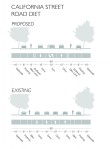
Before and After Street Section for California Street
As mentioned in the last post, the Great Streets Rengstorff Park project is was highlighted in the Mountain View Voice, with a focus on the safety improvements that are urgently needed for California Street following the tragic case of reckless driving that killed William Ware.
Judging from the comments, there was a lot of interest in the idea, but there were questions about California Street’s ability to function with two car lanes and one turn lane, instead of four car lanes. I thought it would be appropriate to go into a bit more detail about how the road diet can successfully work and why it’s good for California Street.
Capacity Isn’t Reduced
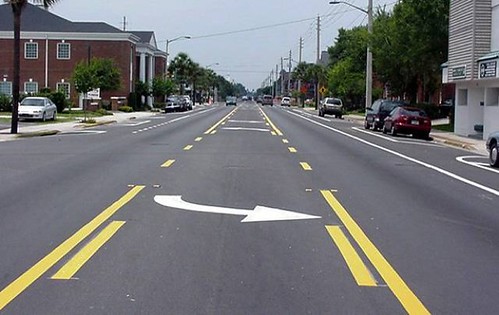
The new center turn lane is what makes road diets work for drivers and improves capacity.
According to research on lane reductions from around the country, streets that cary less than 20,000 cars per day are good candidates for road diets. These streets don’t cause spillover onto nearby streets because the new center turn lane improves capacity. The most recent City of Mountain View traffic data states California Street caries approximately 11,400 vehicles per day, well within the paramaters of a road diet.
While spillover vehicle traffic is an important factor, it should not be the only criteria for considering a road diet. Road diets substantially improve safety, make streets more livable, and provide extra space for safer movement of cyclists and pedestrians.
It’s Not Just About Cars
According to a study from the Federal Highway Administration (FHWA), road diets are proven solutions for safer streets, because they reduce vehicle speed and minimize conflicts that arise from multiple lanes, numerous driveways, and many pedestrian and bicycle crossing areas. The FHWA studied roads similar to California Street that went on a “diet,” and there was a 19 percent decrease in total crashes, described as “a substantial difference,” after controlling for changes in traffic counts.
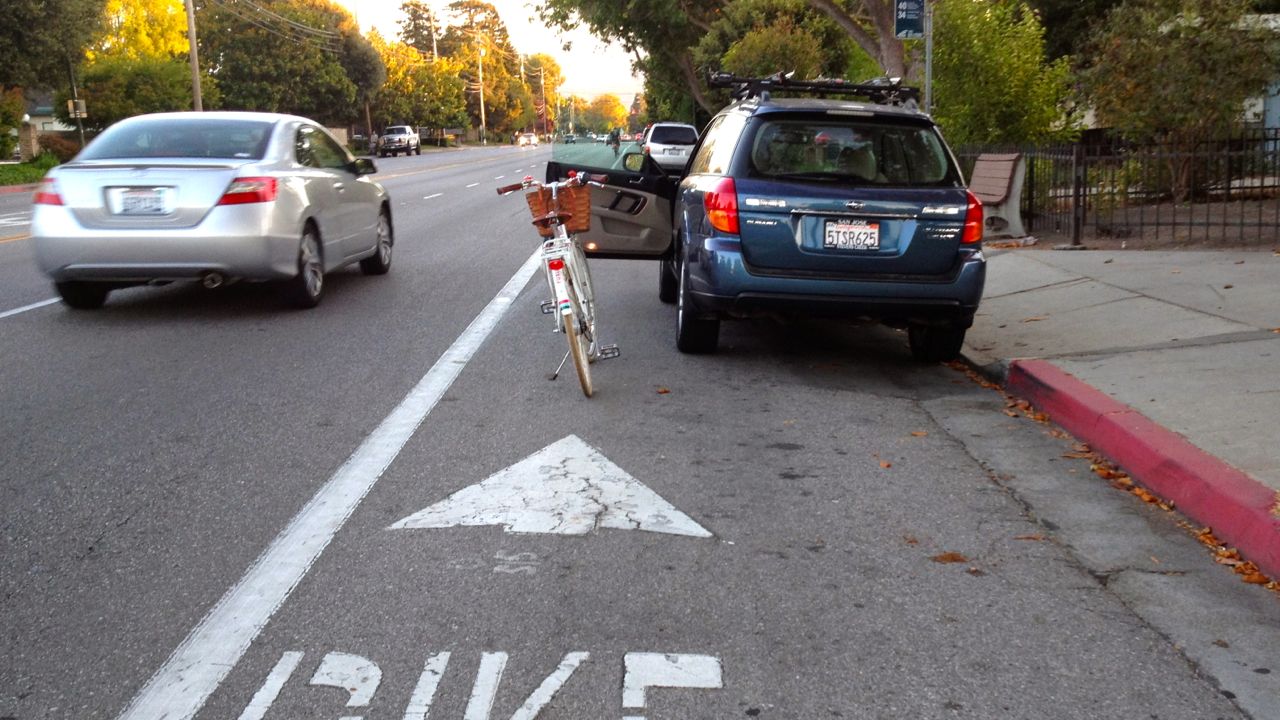
Many bike lanes in Mountain View, including those on California Street, are dangerously striped in the “door zone.” The road diet will allow wider bike lanes so doors aren’t a hazard, making for a low-stress riding experience. Source: Janet LaFluer
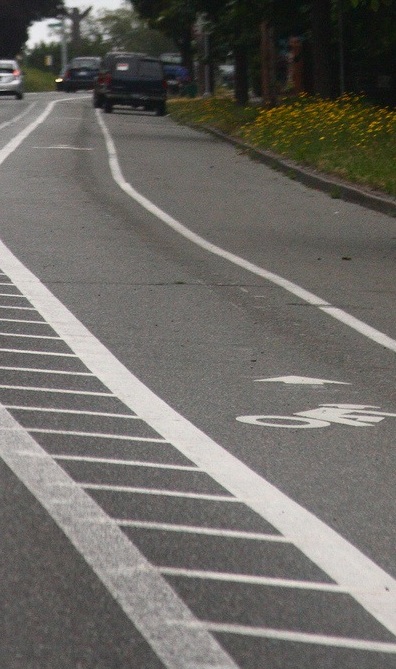
The road diet would allow for wider bike lanes with a painted buffer. Source: Will Vanlue
The extra space can also accomodate wider bike lanes that are safer and make cycling a more attractive transportation option. The existing bike lanes on California Street are within what’s called the door zone, which means if a person in a parked opens their door without looking, a cyclist may collide with the open door or be forced to swerve into the traffic lane. Both outcomes can lead to injury or death, and cyclist riding in a door zone lane must constantly fear for her safety since every parked car is a potential hazard.
For pedestrians, the additional space are perfect for “bulb outs,” which reduces the crossing distance between sidewalks at intersections, minimizing risk. Additionally, the curb corners can be tightened so vehicles can’t carelessly speed around corners, ignoring and potentially endangering those in the crosswalk.
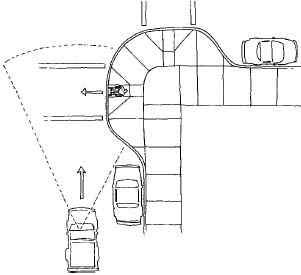
Bulb outs not only shorten the crossing distance for pedestrians, but increase visibility. Source: FHWA
Future Traffic Increase?
In reference to the California Street road diet, Public Works Director Mike Fuller is quoted in the Voice: “But with the projected future (traffic) volumes, we may not be able to.” The projections he’s referring to are in the city’s new General Plan, which is based on a conservative model that assumes minimal reduction in driving by 2030. However, increases in car traffic are not an inevitable force of nature. Building safer, more accessible streets that provide a range of transportation options are key to making the city more livable and improving the quality of life.
UPDATE 9/9/12: The original link to the FHWA study was incorrectly linked to an earlier 2004 study that concluded road diets had limited impact on safety. The FHWA did a follow-up study in 2010 with a more detailed statistical model and found that road diets do have a positive impact on safety. The link in the article has been changed to the 2010 study.
by jarkatmu | Aug 30, 2012 | Uncategorized
We are delighted that Mountain View Voice has an article about GSRP and the street modifications we would like made to improve the safety and public spaces for everyone in Mountain View.
If this is your first time here, Please sign up for our newsletter and read our vision.


